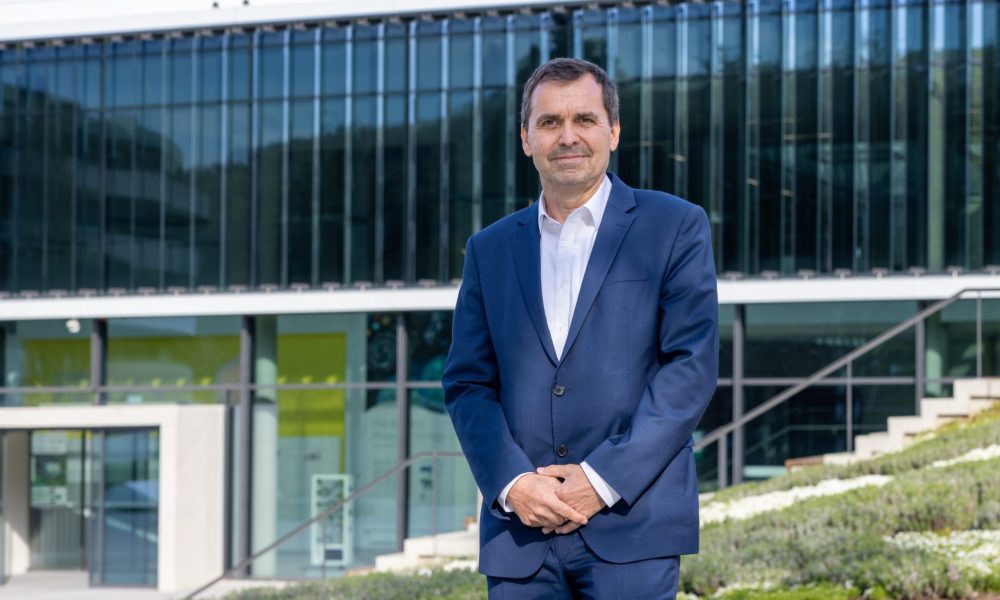
We are EMBL: Jürgen Bauer on translating ideas into applications
Jürgen Bauer talks about translating science into applications with societal benefit, his journey from the lab bench to business development, and technology transfer at EMBL

Jürgen Bauer is Deputy Managing Director at EMBLEM, EMBL’s wholly owned subsidiary and technology transfer partner. Here, he shares his passion for translating science into applications with societal benefit, describes his journey away from the lab bench towards business development, and describes how he and his colleagues work with scientists to identify, protect, and commercialise the intellectual property developed at EMBL.
What excites you most about your work?
I’m always curious to see new technologies that have a high disruptive potential. Two other things that inspire me are enthusiastic scientists who are committed to making a difference by turning their science into products and working in a committed team to make things happen. Creating a company is one of the most complex types of project, and I find this process of seeing how things come together from a first idea to a fully-fledged company really satisfying.
Why is it important for scientists to translate their work to the market?
I believe that each scientist should be motivated to create an impact. It’s a responsibility of science to return something to society. If you look at the R&D spend of a country like Germany alone – more than 20 billion EUR per year – then we should think about how we can return something to the people that pay for it.
But it’s not just a responsibility. I’m also sure that the process can bring a lot of satisfaction. Of course, papers are the ‘currency’ of science, but whenever I work with researchers, I see a lot of excitement and satisfaction when they turn their science into applications.
You have a background in scientific research. What motivated you to go into business development and technology transfer?
I was always interested in turning science into applications or products. When I did my PhD in microbiology, I worked on yeast genetics. I wanted to understand the physiology of these organisms better and identify ways to use them for industrial applications. So, I’d say a key driver for me was always the idea of turning science into products.
Why I ended up going specifically into business development was the feeling that as a scientist in the lab, I could not make the difference I wanted to make. I wanted to be one of the people steering the process, working at the link between academia and industry. I realised that tech transfer was the place for me to be, and that I could bring my experience to fill this critical piece in the puzzle of translating ideas to the market.
You have been working at EMBLEM for almost 18 years – how has your work changed in that time?
There are two main aspects that have changed. First, 20 years ago, there was a lot of talk of the ‘dark side’ of industry and the ‘light side’ of academia, and that industry and academia don’t work together much. This divide no longer exists for me, and there is a lot more collaboration between industrial research and academia, with added value for both of them.
Second, EMBL has grown significantly during this time, including the amount of external funding. This means that there is a higher need for regulation of our interactions. My hope is that overall such regulatory requirements remain at the service of scientists and science, so that they do not inhibit the science unless absolutely necessary.
And how do you envisage it will change over the next few years?
I believe the interactive and collaborative culture between industry and EMBL will continue to be a key component that will grow further. Complex challenges in our society can only be tackled in close collaboration and by bringing together experts of multiple fields.
At the same time, EMBL’s new programme will open up the possibility to interact with a different ecosystem of industries and companies, for example, in agrotech.
You talk about collaboration – how important is it to achieving your goals?
Collaboration is key for us. Innovation would not happen without collaboration. Working at the interface of academic science and industrial applications, one needs a portfolio of different expertise and competencies. To successfully bring science to the market a variety of expertise in research, development, business and law need to be combined.
Please describe the different ways in which you work with EMBL staff.
We try to establish a trustful and collegiate relationship early on. When a new group leader arrives, we meet with them to introduce ourselves and how we work. For predocs and postdocs, we run seminars and workshops. And we meet regularly with EMBL scientists to find out about their latest work and offer Innovation Works Sessions via Zoom, where scientists can pre-arrange meetings with our team to discuss topics they are interested in.
What has been the biggest challenge in your career thus far, and how did you overcome it?
It’s difficult to pick just one. But I would say that it was creating my own company, after working at a biotech firm. When that company decided to close the technology department for strategic reasons, I engaged in spinning it off into a new company. In doing so, I didn’t just need to develop the business plan. I also had to convince colleagues to join this venture, to trust my vision. This is such an important step in creating a company: you need to be enthusiastic but also burn for it in a way that convinces others to come along with you on the journey.
What do you do in your spare time to balance professional activities?
I spend most of my time in the office, in meetings, or travelling. I compensate by being active in nature. When I was younger, I enjoyed windsurfing. I stopped when my children were born but then took them along with me when they were older. Now I enjoy the slightly more relaxed pace of sailing, but also hiking and skiing.


